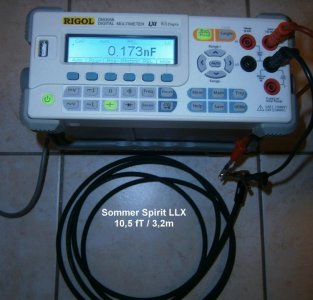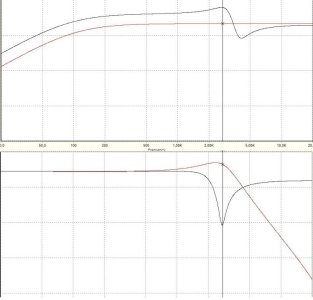freefrog
Well-known member
With that being said, I will share some info I picked up in a different forum today. This might explain things.
This is because of the common ground?
No, It happens because of capacitively-coupled crosstalk between the two output wires inside the cable due to the very high-impedance environment.
Why then didn't they do this when the two sets of wires I used to have, hit the common ground of my gear?
Because they were physically separate wires, so the capacitive coupling was negligible. The common ground is completely irrelevant.
So I'm correct in assuming that this passive arrangement is not going to work as is?
Only if you use separate cables.
Using a cable with two individually screened cores would undoubtedly help, but I expect you'll either need physically separate outputs and two separate cables (as per your trial rig), or active buffering circuitry inside the guitar to convert from the high-impedance internal wiring to provide low impedance outputs.
Ironically, I was about to evoke capacitive coupling as a possible explanation among others and have renounced to post about that because capacitance is something that I mention way too often in my posts.
Now, what you quote appears to me as logical and clear at first glance. Not that you need to know my feeling about that but it doesn't harm either. ;-)
Hope you'll find a solution.


